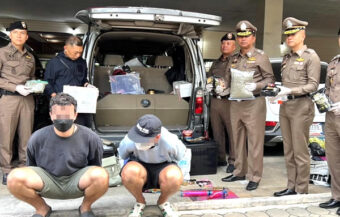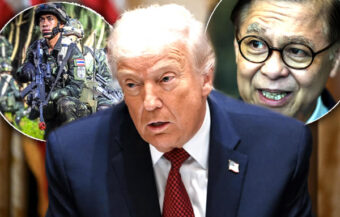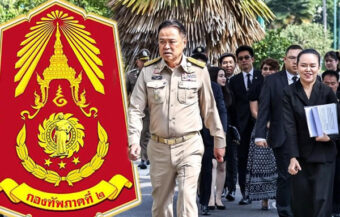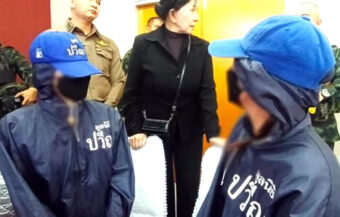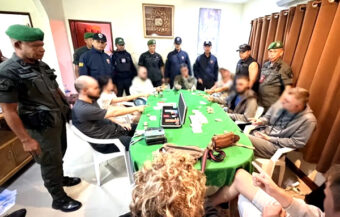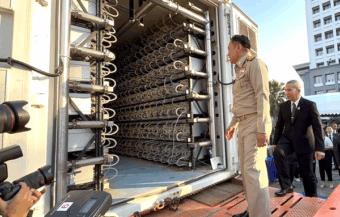Thailand dumps U.S. fighter jet deal after F-35 snub—opts for Sweden’s Gripen jets in bold defence shift. Air Force chiefs call it a leap toward independence, EU ties, and future-ready air power. Washington left sidelined as Bangkok charts its own path.
The Royal Thai Air Force has officially decided to procure Swedish-made Gripen fighter jets as part of its ongoing modernization program. On Wednesday, Air Chief Marshal Panphakdi Pattanakul announced a deal to purchase four state-of-the-art aircraft from the Swedish manufacturer. He described the move as a breakthrough for both the Royal Thai Air Force and Thailand’s broader aerospace sector. The decision is widely seen as a signal to Washington D.C. about Thailand’s evolving geopolitical and economic direction.
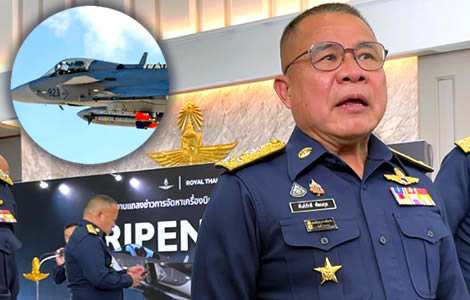
Thailand has selected Sweden’s Gripen fighter jets for its next generation of air defence, rejecting a U.S. proposal. The Royal Thai Air Force announced the decision Wednesday, marking a major shift in both military strategy and foreign relations.
The purchase effectively sidelines the United States, which had offered a package of upgraded F-16s. Earlier in 2023, the U.S. also denied Thailand’s request for the more advanced F-35 fighter jets. American officials claimed that Thailand lacked the proper infrastructure to host such fifth-generation aircraft.
However, Thai defence officials believe there were deeper reasons. Behind closed doors, Washington had expressed concerns about Bangkok’s growing military cooperation with China.
Thailand rejects US fighter deal after F-35 snub and concerns over closer Thai ties with Chinese military
Although the U.S. tried to maintain the relationship by offering a financing plan for F-16s, that too failed. Deputy Prime Minister and Defense Minister Phumtham Wechayachai rejected the proposal earlier this year.
This week, Thai military chiefs made clear that the Gripen deal goes beyond defence. It also supports economic cooperation with Sweden and the European Union.
“This is not just about buying aircraft,” one senior officer said. “It’s also about investing in partnerships that respect our independence.”
Air Chief Marshal Panphakdi Pattanakul, Commander-in-Chief of the Royal Thai Air Force, emphasized this point. He said the Gripen fighter meets both performance demands and national goals.
“This project inspires full confidence,” he stated during Wednesday’s press conference. “We’ve followed a transparent, fair process that aligns with the government’s direction.”
When asked about the timing, Panphakdi addressed concerns about Cabinet approval. “Minister Phumtham was informed of every step,” he said. “We received full permission to move forward with the announcement.”
Gripen project reflects strategy, economic goals and full cabinet approval according to top Thai air chief
He confirmed that everything done so far follows national policy and reflects shared government goals.
Critics have asked whether the Gripen E/F aircraft will remain useful in future warfare. Panphakdi responded confidently. “We selected technology that can serve us for the next 30 years,” he said.
“Air combat will evolve, and we must stay ahead,” he added. “Our selection ensures operational effectiveness for decades.”
Thailand’s current F-16s have been in service for nearly four decades. “These aircraft have clear limitations,” Panphakdi noted. “We’ve pushed them as far as we can.”
The Air Force received its first batch of Gripens in 2011. “They’re still modern,” he said. “But new threats demand new capabilities.”
According to Panphakdi, the older Gripens will remain in use for at least another ten years. However, newer versions offer more advanced systems.
“Upgrading our air power is no longer optional,” he said. “It’s a national imperative.”
Gripen selected for future readiness as old F-16s near limits and Air Force seeks long-term capabilities
Importantly, he stressed that Thailand’s military posture remains defensive. “We’re not looking to attack anyone,” he said. “But we must protect our territory.”
He added that the Gripen package includes economic returns. “This deal brings benefits beyond security,” he said. “It’s a model project for future military cooperation.”
Air Chief Marshal Seksan Kantha, Assistant Commander-in-Chief, outlined the procurement timeline and budget. The first four jets will be purchased from 2025 to 2029 under a five-year budget plan.
The initial order includes three Gripen E (single-seat) and one Gripen F (dual-seat) aircraft.
Each jet will come with advanced support systems. These include electronic warfare tools, air-to-air Meteor missiles, and long-range communication technology.
“The Gripens will carry beyond-visual-range weapons,” Seksan said. “This gives us a significant edge in aerial combat.”
He noted that the purchase also includes spare parts, pilot training, and logistics systems. “We’re not just buying planes,” he added. “We’re building capability.”
Thailand outlines Gripen budget and upgrades with new missiles, systems and a five-year procurement plan
Meanwhile, Air Chief Marshal Kitkhuan Sapad explained how the package supports the Thai industry.
The contract includes 14 compensation items—seven direct, and seven indirect. Direct benefits include tactical data-sharing systems such as Link T. This allows seamless operations with other Thai military units.
“This system expands our command-and-control ability,” Kitkhuan said. “It also boosts independence in future joint operations.” Other direct benefits include technology transfer and aviation industry support.
As for the indirect offsets, these focus on cyber development, education, and foreign investment. “This is a holistic plan,” he said. “We’re upgrading defence and industry together.”
Air Chief Marshal Poonsak Piyarat, head of policy and planning, explained the legal and procedural steps ahead. He confirmed that the process complies with Ministry of Defense guidelines for government-to-government arms deals.
Deal includes data-sharing systems, cyber development and offsets to support Thai education and industry
The Air Force will submit its final proposal to the Royal Thai Army by early June. Next, the Ministry of Defense will receive the plan for review by mid-June.
Simultaneously, the draft contract will go to the Attorney General’s Office and the Department of Treaties and Laws. This legal review ensures compliance with both national and international law.
Budget officials will review the plan in parallel. “We expect to finalize funding by the end of June,” Poonsak said.
Once approved, the Cabinet Secretariat will present it to the Cabinet no later than July 15. If there are no delays, the Royal Thai Air Force will sign the contract by the end of August. The signing will likely coincide with a state visit by Prime Minister Paetongtarn Shinawatra to Sweden.
Officials said the trip will include the signing of a broader cooperation framework. This new framework aims to strengthen Thai-Swedish ties in defence, trade, and innovation. Observers see the Gripen deal as a strategic message to Washington.
Gripen deal expected to close in August with legal reviews and cabinet approval ahead of PM’s Sweden trip
Thailand wants modern defence tools without further conditions. It also seeks stronger ties with Europe amid rising geopolitical competition in Asia. The United States still maintains close defence ties with Thailand. But this purchase reflects a clear pivot.
It shows Bangkok’s desire for more autonomy and fewer restrictions on military purchases. Sweden, unlike the U.S., does not attach political conditions to defence sales. That makes it an attractive partner for countries balancing between global powers.
In recent years, Thailand has faced pressure from both China and the United States. This deal signals that Thailand will make its own decisions, on its own terms. Nonetheless, it is worth noting that Sweden is now a full North Atlantic Treaty Alliance (NATO) member.
US turns down Thai request for advanced F35 fighter jets but offers less expensive F16s and F15s
Air force seeks eight F35 fighter jets at a time when Thailand’s defence budget finds itself at a low ebb
It also shows the Air Force’s readiness to modernize with flexible and advanced platforms. As one officer said, “We chose what’s best for Thailand, not what pleases others.”
In the coming months, the Gripen deal will face further scrutiny, but Air Force leaders remain confident. They believe the decision reflects Thailand’s evolving defence priorities and long-term strategy. If approved, it will mark one of the kingdom’s most important arms deals in decades.
Join the Thai News forum, follow Thai Examiner on Facebook here
Receive all our stories as they come out on Telegram here
Follow Thai Examiner here
Further reading:
US turns down Thai request for advanced F35 fighter jets but offers less expensive F16s and F15s
China could be an economic time bomb sitting on Thailand’s doorstep as Evergrande collapse nears
With Omicron hovering, firms already suffering a cash flow crunch with the economy again in peril
UK Foreign Secretary visits Bangkok after AUKUS security pact further raises tensions with China
Trade pact with Hong Kong as Thailand negotiates both Chinese and new western trade relationships
US Ambassador resigns as Biden Presidency starts with growing tensions with China over Taiwan
RCEP deal agreed as India opts out – busy Bangkok ASEAN summit concludes on a low key
Chinese FM to visit Thailand in a Covid battered world of raised tensions and potential conflict
Prime Minister indicates that the cabinet reshuffle will be complete very shortly with no problem
Thailand’s economy has become dependent on government expenditure to stay above water
Thailand and US aim for a new more ‘proactive’ trading relationship as ambassador meets Prayuth


